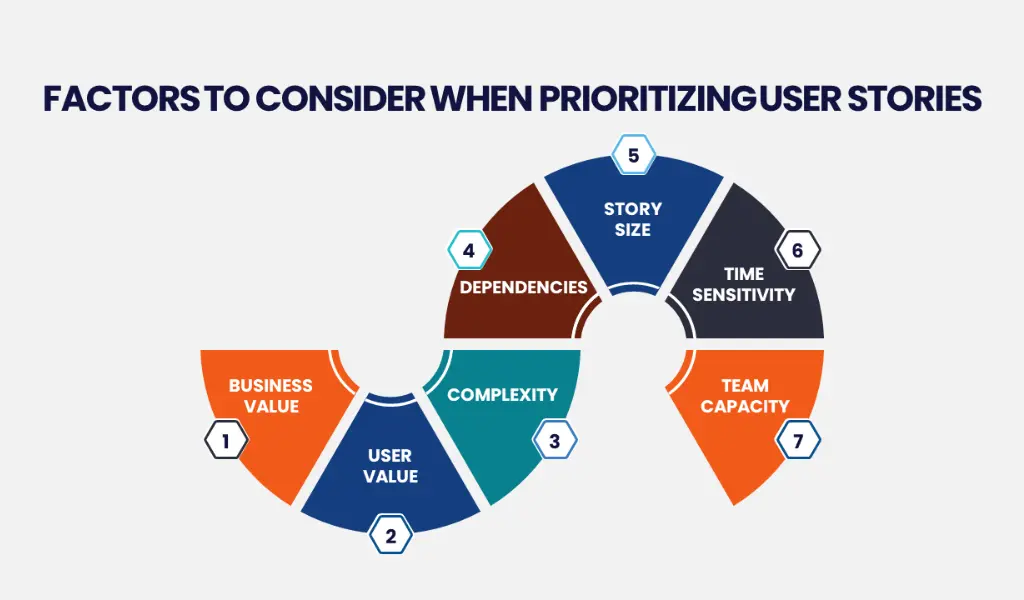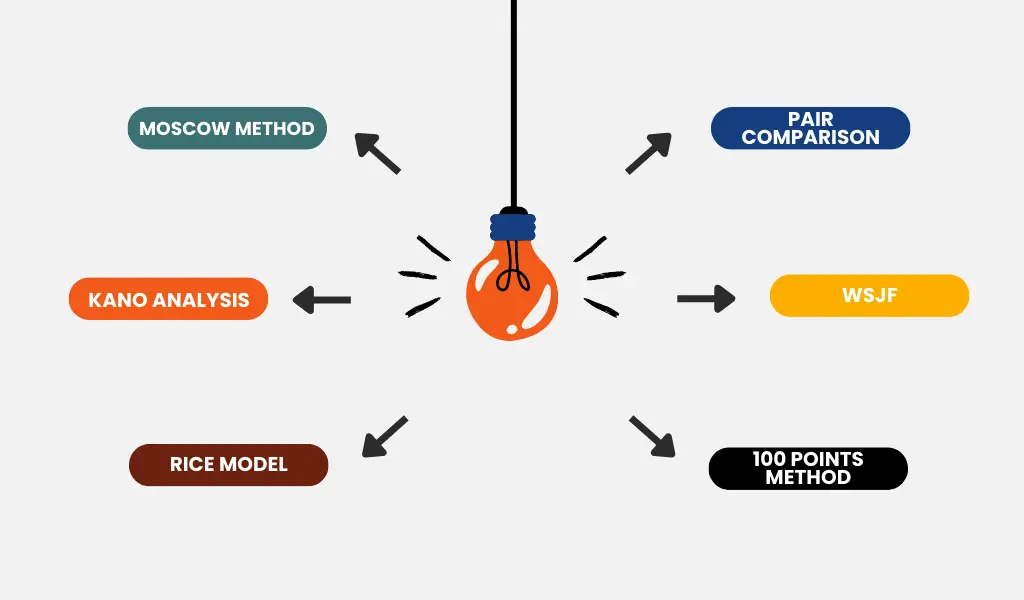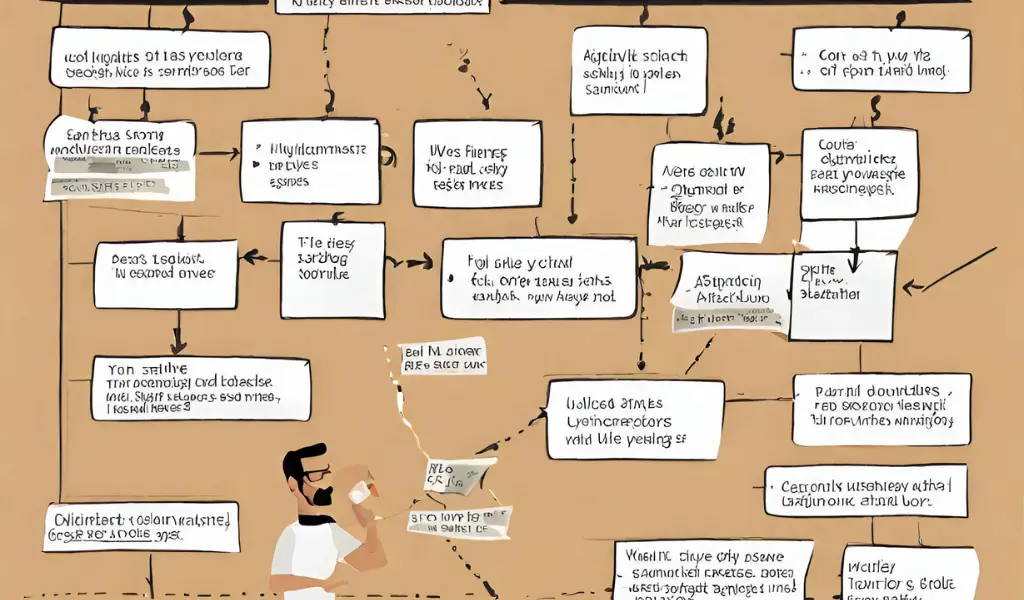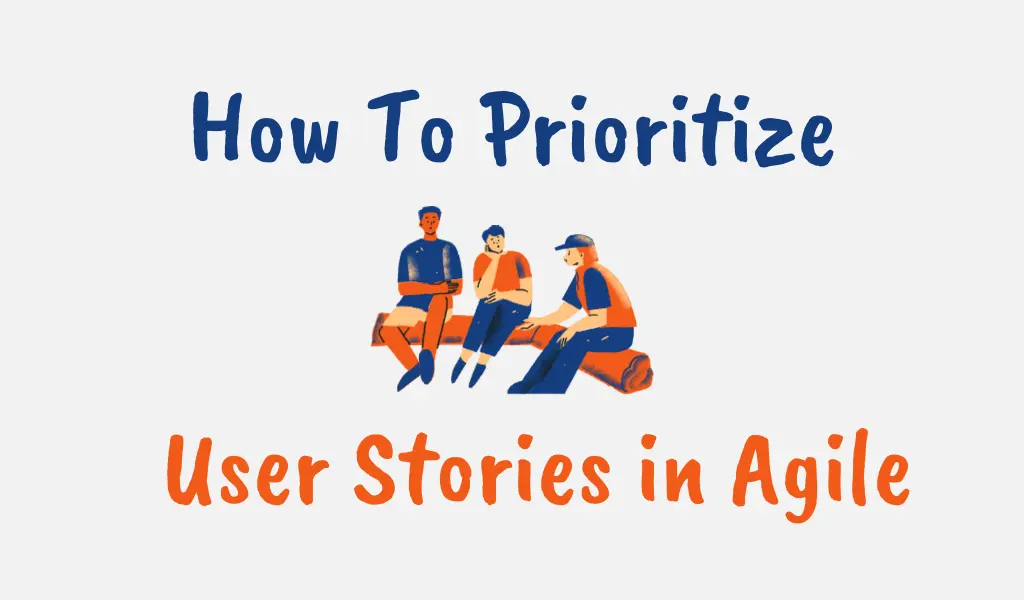As a Product Owner, you are going to have a backlog filled with various user stories describing different features, functionalities, and requirements when developing a product.
However, with limited resources and time-boxed iterations, you cannot work on every user story right away. The question is, which stories are your first picks?
The solution comes from using an effective system to determine the priority and order of user stories in your backlog.
Prioritizing user stories is a critical aspect of Agile planning and development. Using criteria like business value, risk, dependencies, and size, you can focus your team’s efforts on the most critical ones first to deliver value faster to customers.
In this article, we cover how to prioritize user stories in Agile, factors to consider, as well as the pros and cons of different prioritization methods.
What are User Stories in Agile?
User stories describe the functionalities or features of a product that will deliver value for the end-user from the user’s perspective.
They are a key part of Agile software development and Scrum framework.
User stories typically follow the format:
“As a [user type], I want [goal/desire], so that [value received].”
For example:
“As a user, I want to be able to reset my password so that I can access my account if I forget my current password.”
The user story describes the requirement from the user’s perspective using the 3 C’s of user stories.
The detailed functionality is not specified upfront, allowing the development team flexibility in implementation.
Acceptance criteria are often defined to set expectations for when a user story can be considered complete or “done”.
User stories are intentionally small so they can be prioritized and completed within a Sprint.
Writing effective user stories is key for Agile teams to deliver value iteratively and one way of doing this is by using the INVEST criteria.

Advantage of Prioritizing User Stories
As earlier iterated, teams have limited resources and time to complete work during a Sprint, so prioritization helps ensure they are focused on the most valuable features first.
There are several other advantages of prioritizing user stories including:
Maximized Value
Prioritizing by business value and ROI ensures the development team is working on features that offer the most benefit to customers and the product first to maximize the value delivered in each Sprint and release.
Managed Resources
Proper prioritization allows teams to allocate their resources and capacity most efficiently so they can balance priority with their bandwidth to avoid overloading the team.
Reduced Risk
Some user stories may carry more technical risk or complexity than others. Prioritizing these riskier items early helps identify issues sooner and mitigate that risk.
Roadmap Visibility
A prioritized backlog gives a clear picture of upcoming priorities and the development roadmap ensuring that stakeholders can see what stories are next in the pipeline.
Aligned Focus
With a ranked backlog, stakeholders and the team can stay focused on the most critical user stories, and effort remains centered on the features that matter most to customers and the business.

Factors Considered When Prioritizing User Stories
Several factors should be considered when prioritizing user stories in Agile development.
The goal is to balance these factors and determine the optimal sequencing of stories to deliver maximum value.
Some of the key factors include:
1. Business Value
The business value looks at the expected Return on Investment (ROI) and benefits each user story offers.
Those that have higher strategic importance, revenue potential, or cost savings should be ranked higher.
2. User Value
This evaluates the value a story provides to users. User stories that improve satisfaction, and engagement, or address major user needs receive higher priority.
3. Risk and Complexity
Stories with greater technical risk or complexity should be prioritized earlier. This allows more time to resolve tricky implementation issues. The stories should however be relevant to the overall objectives.
4. Dependencies
User stories may rely on other stories or components being completed first. Identifying these dependencies ensures work can proceed smoothly.
5. Size of the Story
Smaller stories are easier to plan and complete within a Sprint. Mixing story sizes also allows teams to maximize capacity.
6. Time Sensitivity
Stories that are needed sooner for events, releases, or external factors receive higher priority.
7. Team Capacity
The capacity of the Agile or Scrum Team impacts how many stories can be completed per Sprint. Priorities may need to be adjusted based on bandwidth.

How to Prioritize User Stories in Product Backlog
There are several techniques that Product Owners and Agile teams can utilize to prioritize Agile user stories in the Product Backlog.
Each has its advantages and fits certain scenarios better than others.
1. MoSCoW Prioritization Method
The MoSCoW method is an easy technique for relatively refining a Product Backlog by separating user stories into four priority buckets:
Must-Have
These user stories are critical and must be included in the product for it to meet minimum viability criteria.
Without these absolute baseline features, the product will not function or meet user needs.
Must-haves should comprise the minimal feature set for an initial release. They allow customers to achieve their primary goals and provide core value.
Should-Have
While not essential, these user stories deliver significant value to users and the business.
Should-haves will enable important new capabilities that take the product substantially beyond an MVP.
They should be prioritized right after must-haves for functionality additions.
Could-Have
These are features that enhance the user experience and may be nice to have but are not vital.
They provide supplementary value and can be delayed till future releases if needed based on time/resources. Could-haves are given the lowest priority.
Won’t-Have
These are non-essential user stories that offer minimal ROI or do not align with strategic objectives. Won’t-haves are deprioritized and often discarded or deferred indefinitely.
Advantages and Disadvantages of MoSCoW Method
Advantages of the MoSCow prioritization method include:
- Simple to Understand: The four prioritization buckets are intuitive categories that are easy to explain.
- Facilitates Discussion: Grouping stories sparks conversations around priority and minimum viable products.
- Requires Justification: Categorizing stories as “must haves” demands justification of their criticality.
- Easy Visualization: Grouping stories into clear categories allows for easy visualization of priority.
- Flexibility: New stories can be added and categorized as they emerge.
The disadvantages of MoSCoW prioritization method are:
- Lacks Granularity: Precise prioritization and ranking are difficult across a large backlog.
- No Objective Data: No quantitative data to support categorization. Based on opinion.
- Not Factor Driven: Does not consider effort, dependencies, or risk to prioritize.
- Not iterative: Prioritization is not revisited frequently.
- Ownership Confusion: It is often unclear who decides on categories leading to conflicts.
2. RICE Prioritization Method
The RICE method is a quantitative framework to prioritize user stories by scoring them on 4 factors:
Reach
Reach measures the number of users, customers, or use cases that will be impacted by the story. The higher the number, the greater the reach.
Stories affecting core functionality likely have a broader reach. Reach indicates how many people will derive value from the story.
Impact
Impact evaluates the potential business value delivered by completing the story. This includes metrics like increased revenue, cost reductions, improved customer retention, higher engagement, and other concrete benefits.
Stories with greater measurable impact get higher priority.
Confidence
Confidence level reflects the current certainty around proper requirements, ability to implement within time/budget, and user acceptance. Unknowns and risks lower confidence.
Prioritizing risky, complex stories early helps resolve issues sooner.
Effort
Effort measures the estimated engineering and resource time required to complete a story. The lower the effort, the higher the priority. Simple enhancements get done faster than complex features.
Each story is scored from 1-10 on the 4 factors, and the scores are totaled to give an overall priority allowing Product Owners to make data-driven prioritization decisions.
Advantages and Disadvantages of the RICE Prioritization Method
Advantages of the Rice prioritization method include:
- Quantitative Criteria: Uses numerical scores to enable data-driven prioritization.
- Multiple Factors: Looks at reach, impact, confidence, and effort for a robust evaluation.
- ROI Focus: Impact and effort scores optimize for maximizing return on investment.
- Identify Risks: Low confidence highlights uncertain stories to address earlier.
- Easy to Understand: Intuitive factors that are easy to explain to stakeholders.
Disadvantages of the Rice prioritization method include:
- Subjective Scores: Criteria scoring includes some personal judgment.
- Ongoing Maintenance: Scores must be updated as the project evolves and this can be time-consuming.
- More Complex: It’s harder to apply than simpler methods like MoSCoW.
- Effort Estimation: Accurately estimating the level of effort can be difficult.
- Limited View: It does not consider dependencies or technical debt.
3. Kano Analysis
Kano Analysis is a technique that brings a customer-centric lens by evaluating the potential impact on satisfaction.
This allows intentionally balancing different story types to create a compelling user experience.
It categorizes product features or user stories into 5 groups based on how they affect customer satisfaction:
Thresholds
These are basic features users absolutely expect and require and their absence would cause extreme dissatisfaction.
However, their presence merely prevents dissatisfaction rather than increasing satisfaction. Thresholds set the baseline user expectations.
Performance
These features directly drive user satisfaction in proportion to how well they perform their function. The better the performance, the higher the satisfaction.
Optimizing performance stories enhances the overall customer experience.
Exciters
Exciters are innovative capabilities that go beyond expected requirements and delight users by exceeding expectations. These create excitement, engagement, and long-term loyalty.
Indifferent
These stories have little discernible impact on user satisfaction whether implemented or not. They are neutral nice-to-have elements.
Reverse
These rare stories actually decrease satisfaction if implemented and should be actively avoided in the product.
Advantages and Disadvantages of Kano Analysis
Advantages of Kano Analysis include:
- User-Focused: It puts customer satisfaction at the center rather than features.
- Differentiates Stories: Kano analysis goes beyond business value to categorize by user impact.
- Highlights Excitements: Identifies potential delighters to create engagement.
- Avoids Dissatisfiers: It prevents investing in stories that may actually hurt.
- Needs Balanced View: Encourages diversity of story types in the backlog.
Disadvantages of Kano Analysis are:
- Time Intensive: Interviewing users and analyzing the results takes time and effort.
- Subjective: Satisfaction perceptions can be subjective from person to person.
- Fluid over Time: User needs evolve so revalidation is required.
- Over Simplification: It reduces complex stories down to one category.
- Narrow View: It focuses only on satisfaction rather than business goals.

4. Weighted Shortest Job First (WSJF)
Weighted Shortest Job First (WSJF) is a quantitative prioritization technique that scores each user story based on two factors:
Cost of Delay
The cost of delay estimates the economic impact per unit of time if the delivery of the user story is delayed.
This models the financial loss and missed value by not having the story completed right away.
Quantifying the cost of delay helps identify which stories should get priority to avoid that loss. Higher cost of delay scores mean higher priority.
Job Size
Job size measures the estimated effort in terms of time and resources required to complete the implementation of the story. Smaller, simpler stories require less job size than larger complex stories.
Stories with smaller job sizes can get done faster. Weighted shortest job first focuses on smaller stories with the highest value.
WSJF priority = (Cost of Delay / Job Size)
The Product Owner scores each story on the cost of delay and job size and the ratio determines the ranking.
WSJF brings data-driven decision-making to prioritization based on maximizing value and minimizing development time.
By considering the cost of delay and implementation effort, WSJF helps optimize ROI and speed to market. You can read more on how to calculate WSJF here.
Advantages and Disadvantages of Weighted Shortest Job First (WSJF)
Advantages of the Weighted Shortest Job First (WSJF) technique include:
- Data-driven Decisions: Quantitative scoring enables objective data-based prioritization.
- ROI Optimization: Prioritizes by cost of delay to maximize return on investment.
- Speed Focus: Shorter jobs get done faster to accelerate time-to-market.
- Easy to Understand: Simple priority formula based on two factors.
- Predictability: Allows forecasting of throughput and cycle time.
Disadvantages of the Weighted Shortest Job First (WSJF) technique include:
- Subjective Estimates: Its Accuracy depends heavily on the correct scoring of the two factors.
- Just Two Criteria: It has a limited view by focusing only on value and speed.
- Scope Fragmentation: It can lead to too many small disjointed stories.
- Poor Cohesion: It may not optimize for related stories or dependencies.
- Narrow View: It focuses on individual stories rather than the product roadmap.
5. Comparison in Pairs
The comparison in pairs technique provides a simple but effective way to rank a Product Backlog’s user stories relatively. The steps to use this technique are:
- List out all unprioritized user stories
- Take the first story and compare it one-to-one against the second story
- Decide which of the two is a higher priority based on criteria like business value, risk, and effort
- The higher-priority story moves forward
- Compare the winning story against the next story in the list
- Again, the higher priority of the pair moves forward
- Continue pairwise comparisons until all stories are ranked
This method forces Product Owners to make intentional priority decisions between each story.
Rather than ill-defined bucketing or scoring, direct comparison focuses on logical reasoning to arrange stories.
With well-defined criteria, comparison in pairs is an efficient way to relatively rank user stories in terms of business impact.
Advantages and Disadvantages of Comparison in Pairs
Advantages of Comparison in Pairs include:
- Simplicity: It’s easy to understand a direct comparison between two items.
- Granular Focus: It evaluates each user story individually in detail.
- Intentional Decisions: It forces conscious priority reasoning for every comparison.
- Flexible Criteria: Custom criteria can be defined for comparisons.
- Effective Ranking: It produces a clear relative ranking of the entire backlog.
Disadvantages of Comparison in Pairs include:
- Time Intensive: Comparing every story to every other story is slow for large backlogs.
- Difficult Tradeoffs: It’s hard to choose between stories that have different benefits.
- Subjective: Its results rely heavily on the individual making the comparisons.
- Isolated View: It does not account for dependencies or interactions between stories.
- Limited Scaling: It becomes ineffective with hundreds of dynamic, changing stories.
6. 100 Points Method
The 100 Point Method is a simple weighted voting approach to prioritizing Product Backlogs collaboratively.
The steps to use this method are:
- Assemble key stakeholders
- Review the unprioritized user stories in the backlog
- Give each person 100 points to divide between the stories
- Have stakeholders independently allocate points to each story based on their perception of relative priority and value
- They can assign as many points as they want to a story until they exhaust their 100 points
- Add up the total points per story from all stakeholders
- This gives a numerical priority score for each story
- Rank by descending order of points to get the final prioritized backlog
This technique lets multiple stakeholders provide input and align on priority democratically.
Rather than fixed categories or ratios, flexible points allow nuanced evaluation.
Advantages and Disadvantages of 100 Points Method
Advantages of 100 Points Method include:
- Collaborative: It enables multiple stakeholders to provide input.
- Democratic: This method weights all perspectives evenly in the prioritization.
- Nuanced: It allows granular point allocation rather than broad categories.
- Adaptable: Points can be easily updated as priorities shift.
- Buy-in: Stakeholders feel invested in the process and backlog priority.
The disadvantages of the 100 Points Method include
- Time-consuming: It requires coordinating busy stakeholders to be present.
- Analysis Paralysis: Too many voices can overwhelm decision-making.
- Gameability: The participants may strategically allocate points.
- Conformity Bias: The strong voices can overly influence point allocation.
- Oversimplification: It reduces priority criteria down to just points.
Final Thoughts
By prioritizing user stories based on business impact, risk, dependencies, and other factors, Product Owners can optimize the backlog and deliver maximum value in Agile product development
Techniques like MoSCoW, RICE, WSJF, and Kano Analysis provide data-driven frameworks for intentional prioritization.
Considering multiple lenses like customer satisfaction and development efforts leads to balanced prioritization.
Through collaboration, analysis, and focus on the end-user, teams can build roadmaps that move the needle on strategic goals.
FAQs
Which Technique is Used to Prioritize User Stories Before Beginning an Iteration?
The MoSCoW method is a widely used technique for prioritizing user stories before an iteration.
It categorizes them into “Must have”, “Should have”, “Could have”, and “Won’t have this time”, facilitating a clear and effective prioritization process.
Who Prioritizes User Stories in Scrum?
The Product Owner is responsible for prioritizing user stories in Scrum. They arrange the Product Backlog items based on value, cost, risk, and necessity, ensuring the team first works on the most valuable features.





